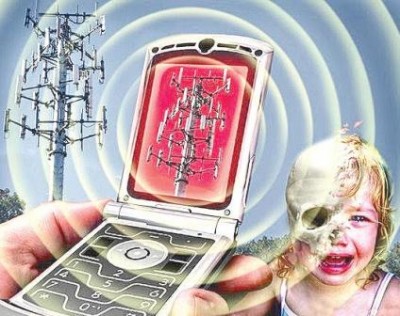Electromagnetic Field Exposure in Kindergarten Children: Responsive Health Risk Concern

All Global Research articles can be read in 51 languages by activating the “Translate Website” drop down menu on the top banner of our home page (Desktop version).
Visit and follow us on Instagram at @crg_globalresearch.
***
Long-term exposure to physical agents can be detrimental to children due to their vulnerability. This study aimed to assess and compare the electromagnetic field (EMF) exposure level around the kindergartens from the underground transmission line (UGTL). We investigated randomly selected 24 kindergartens based on the location of the UGTL. The EMF emission levels were measured using an EMDEX II (Electric and Magnetic Digital Exposure Meter). The maximum mean value of the EMF emission level was 13.5 mG around the kindergartens and 17.7 mG from the point of UGTL to kindergartens. EMF emission level around the kindergartens was significantly associated with the location of the UGTL (t = −7.35, P < 0.001). These estimates are not trivial, as long-term exposure to EMF among kindergarten children can lead to different health problems. Routine monitoring of EMF emission levels is recommended including the awareness of EMF exposure to public citizens.
Introduction
Electromagnetic fields (EMFs) are a form of radiation energy associated with the modern use of electrical power. Sensitive areas like schools, kindergartens, hospital, and other public facilities have been of great concerns of various studies. EMF exposure can lead to environmental impacts (1).
In city areas, transmission lines that are distributed underground still can pose negative consequences to the general public. Kindergartens, schools, and hospitals are more sensitive to EMF exposure.
Exposure to EMF has been correlated with the occurrence in humans, including infants, of potential adverse biological and health effects (2). A variety of studies, however, have not identified statistically significant associations between exposure to EMF and health risks. Although numerous studies have been performed to assess environmental EMF exposures, they are mainly concentrated on assessing exposure in adult populations. Restricted information is available on EMF exposure levels and their related settings in kindergartens and schools (3, 4).
While most of us over the years have probably heard rumblings of the possibilities of negative health effects attributed to high levels of exposure to EMFs, little definitive word has reached the mainstream stamping it as a legitimate concern. The concern about exposure to EMF has developed because of the number of epidemiological studies (5). EMF exposure can pose impacts on the public and the environment. Mostly in city areas, the transmission lines are distributed and constructed underground to minimize the exposure limits. Children’s nervous system is more susceptible than that of adolescents to the effects of EMF exposure. Even though many of us have arguably noticed unconfirmed reports of the possibilities of negative health impacts linked with EMF exposure over the years, no particular set has gone mainstream embroidering it as a real issue (6, 7).
This paper is a short research commentary article based on findings from the assessment and comparison of the EMF emission level from the underground transmission line (UGTL) around kindergartens. The study focuses on the EMF emission level assessment in kindergartens located around the UGTL to address the immediate concern of EMF exposure among children.
Methods
The EMF emission levels in kindergartens were measured based on the location of the UGTL in December 2020. This study includes 24 kindergartens across Busan, South Korea (12 kindergartens located near UGTL and 12 kindergartens without UGTL). The UGTL locations and kindergartens in Busan City were accessed from Busan Korea Electric Corporation and Ministry of Education, Korea, respectively. Then, 24 kindergartens were sampled randomly from the list of kindergartens based on the UGTL location. We calculated the EMF emission levels with two measurement techniques as shown in Figure 1: (i) EMF measurement around the kindergartens and (ii) EMF measurement from the point of the UGTL to kindergartens. The emission levels of EMF were measured using EMDEX II (Electric and Magnetic Digital Exposure Meter). At 0.5, 1, and 1.5 m from ground level, we monitored the EMF emission levels. The data were analyzed using the Statistical Package for Social Science (SPSS) version 23. To identify the association of EMF emission and UGTL, a simple linear regression analysis was performed.
*
Note to readers: Please click the share buttons above or below. Follow us on Instagram, @crg_globalresearch. Forward this article to your email lists. Crosspost on your blog site, internet forums. etc.
Full authors:
Yong Chul Shin
Deog Hwan Moon
Sandip Pahari

